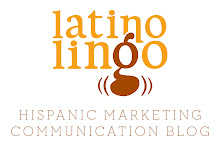Hispanics Will Spend $17.6B on Mobile Devices in 2012
U.S. Hispanic consumers will spend more than
$17.6 billion on mobile devices and over $500 million on mobile apps in 2012, according to a new Zpryme INFOgraphic, 2012 Hispanic Mobile Consumer Trends
Download the Zpryme INFOgraphic, 2012 Hispanic Mobile Consumer Trends here: link
Other findings include:
Download the Zpryme INFOgraphic, 2012 Hispanic Mobile Consumer Trends here: link
Other findings include:
- Over the next six months Hispanics are likely to purchase: smartphone (24%), laptop (21%), and tablet (18%)
- Top three smartphone OS used by Hispanics: Android (27%), Apple (21%), and Blackberry (7%)
- Top three mobile devices owned by Hispanics: laptop (70%), smartphone (52%), and mp3 player (42%)
- Top three daily deal sites visited by Hispanics are: Groupon (40%), LivingSocial (26%), and Eversave (10.2%)
- Top four mobile app types purchased by Hispanics are: games (48%), songs (41%), navigation (24%), and books (23%)
- Of Hispanics that own apps: (84%) of apps are primarily in English, 13% about half in English and Spanish, and 3% primarily in Spanish
- Of Hispanics that own apps: (19%) have 1 - 5 apps, (18%) have 11 - 20 apps, and (17%) have 6 - 10 apps
- Top three activities online by Hispanics are: (84%) email, (67%) social networking and (54%) video/music
Labels: Hispanic cell phones, Hispanic marketing, Hispanic spending, Mobile


